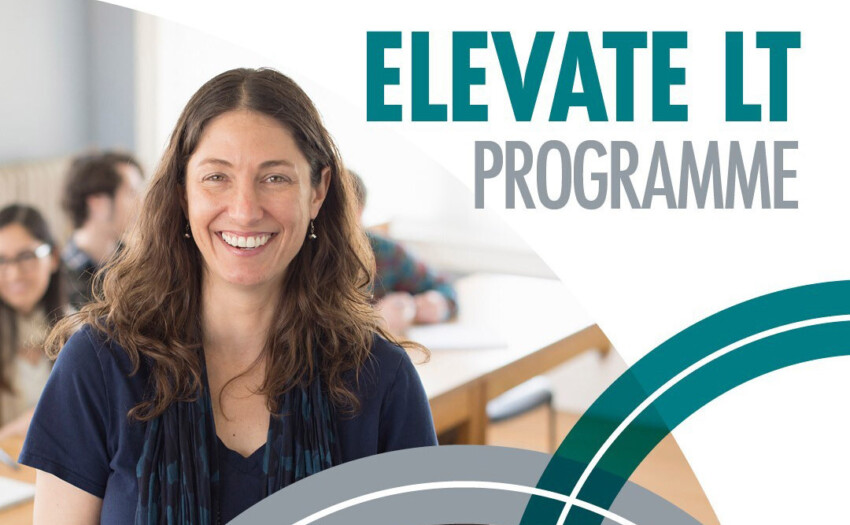Supporting the Modern Teacher
The DfE writes about professional learning also being about recruitment, retention and teacher wellbeing. Here's the many ways in which HOW2s contribute to that.


Just a minute

HOW2s provide a quick and easy way to learn new teaching techniques. This is especially welcome for busy, time-stretched teachers, keen to learn new methods but too tightly scheduled to accomplish this. Searching the internet for tips and desperately scanning books, even conferences, for practical take-aways is an inefficient, and demoralising, way to develop your professional practice.
The 150+ HOW2s are always available to teachers of subscribing organisations and provide the easy access and easy learning that chimes so loudly to the modern, busy teacher. Visual explanations are precise, unambiguous and quick to understand and assimilate.
Not just once

Perhaps one of the most powerful lessons from the evidence gathered about professional learning for teachers, is that one-pass learning — typical of the traditional training day — is totally discredited, however well received by staff. Helen Timperley writes very persuasively about this in her wonderful book The Power of Professional Learning (OUP, 2011).
As professional learning needs to be firmly tethered to student outcomes, it needs to be prolonged and continually measured against this criteria. Episodic, one-off training events, seen in this light, no longer have a place in the modern school or college. For several years now, Geoff Petty has been advocating the minimum of three months extension of the training day to give it significance and impact.
HOW2s give the teacher an easy way to prolong focus and development of a teaching technique. Within a busy professional life, a few snatched minutes — in the staffroom, at home, at Costa — adds coherence and an everyday feel to professional learning.
Just for me

Judging by the way teachers fill up their training room seats from the back, and not the front, speaks volumes about the ineffective practice of scheduling training days for everyone to follow uninvited, often unknown, content.
Once more, the evidence of effective professional learning is that it should be bespoke, directly related to the issues and challenges of each individual teacher’s classroom. Not four to five hours of an invited speaker, however esteemed, to speak to the whole staff in the hope that the message will resonate with every individual teacher. One simply wonders what is in the mind of managers when they organise such training events and what they hope the outcome will be beyond the superficial feedback of end-of-event questionnaires — which Helen Timperley, by the way, terms mere opinionaires.
With over 150 techniques drawn from evidence, the HOW2s offer teachers of all persuasion, skill and experience a wealth of new approaches to consider with which to build a personalised programme of learning and application.
Just in time

There is no significance to the dates used to schedule whole-staff training days. They are merely the residue of previous decades of Baker Days (the term used to identify the newly obligatory training days directed by Kenneth Baker in the late 1980s).
Aligned with the notion of Just For Me, professional learning should also be timely. There’s little point learning about method X, if you are not going to use it until a few months later. And, so, consistent with the idea of designing professional learning from a individual teacher’s point of view, it should be scheduled to coincide with when exactly it is needed.
While that may not be a complicated concept to understand, executing it is something else. But with the HOW2s it becomes a natural way of working. Teachers simply search for, select and apply the techniques they have identified as being appropriate to their current project or focus. It’s as simple as that really.
Just enough

The cognitive scientist John Sweller devised the concept of cognitive load back in the 1980s. But it is only really now that it has caught the attention of teachers and leaders. Of course, this distinction is applicable not just to students and pupils, but to all humans.
Attending a day-long training event, for which you may have accumulated very many pages of notes (that will never be looked at again) is a very poor and inefficient way to go about professional learning. Especially so as we are all in the education sector which, really, should know better.
By organising the HOW2s around individual teaching techniques, we have provided teachers with little chunks of information, each one easily digestible, and in a short time too. This means that teachers are in no danger of cognitive overload, as they are in charge of their time on the app. Once again, a very simple but powerful design feature.
Not just me

While emphasising the bespoke, individual nature of teachers’ use of the HOW2s, I ought to explain that this is not in any way an isolated, segregated experience. Far from it. HOW2s are tightly linked to the Skills Exchange.
With an option of declaring if one is Thinking About Using, Working On, or now Embedded, teachers can signal to colleagues their learning relationship to individual HOW2s. So, if for example, I am interested in learning technique X, I can look through the Skills Exchange and see which of my colleagues has any of the three statuses listed above. This gives me the options of contacting any one of them with a view to supporting my learning.
I may have a preference to learning alongside a colleague, who like me, is also a relative novice in the identified teaching technique. Or I may prefer to learn from someone who is just a few steps ahead of me, so to speak. And, perhaps the more popular choice might be to choose a colleague who has already been through the learning and adaptation phases and has embedded the technique into their repertoire.






